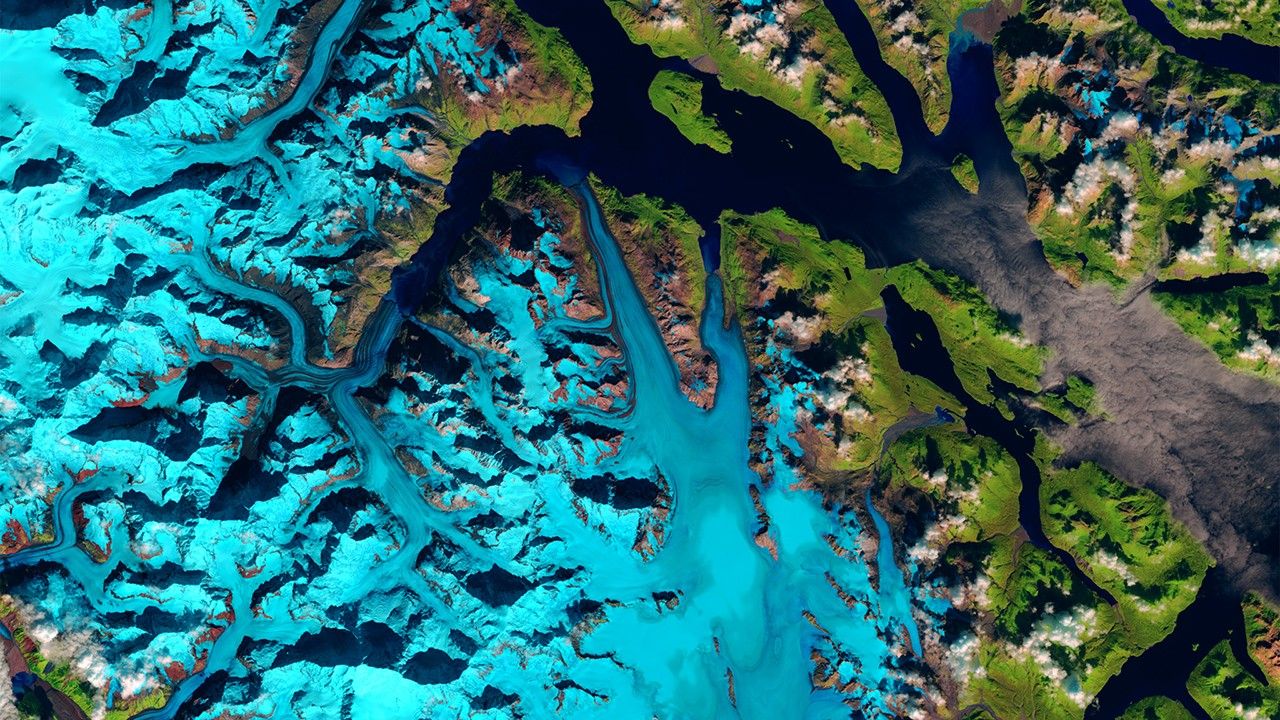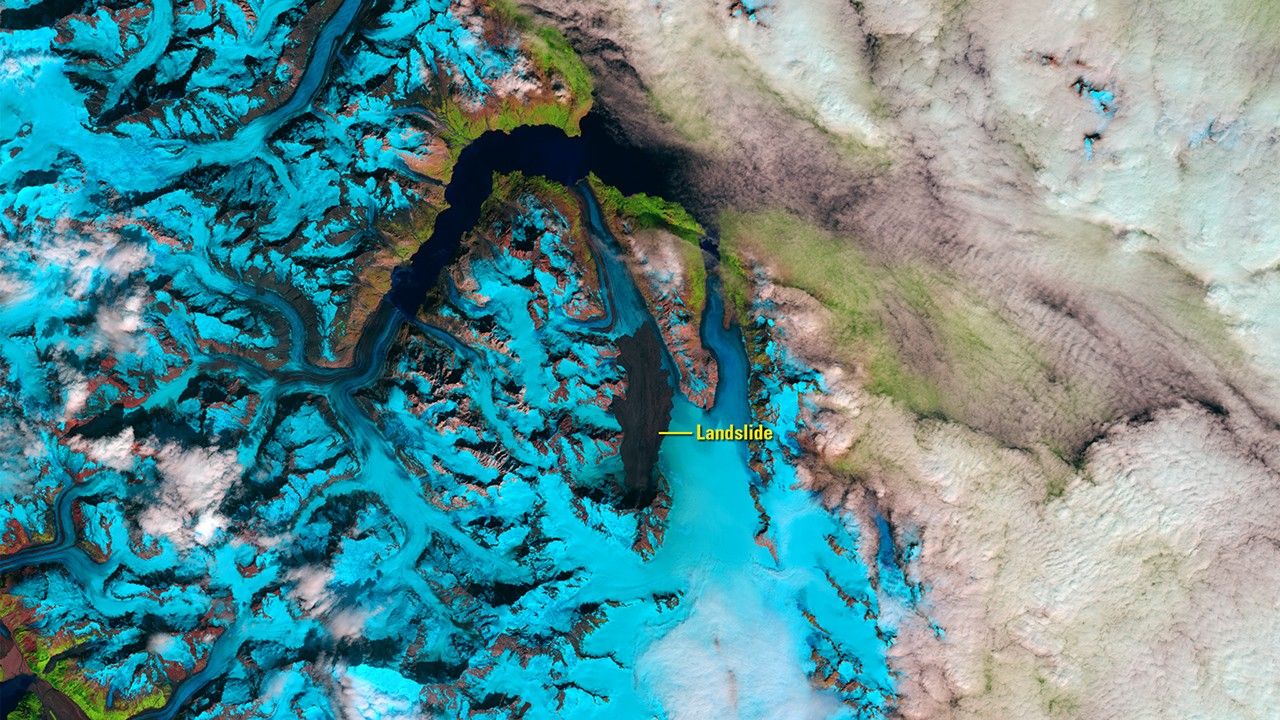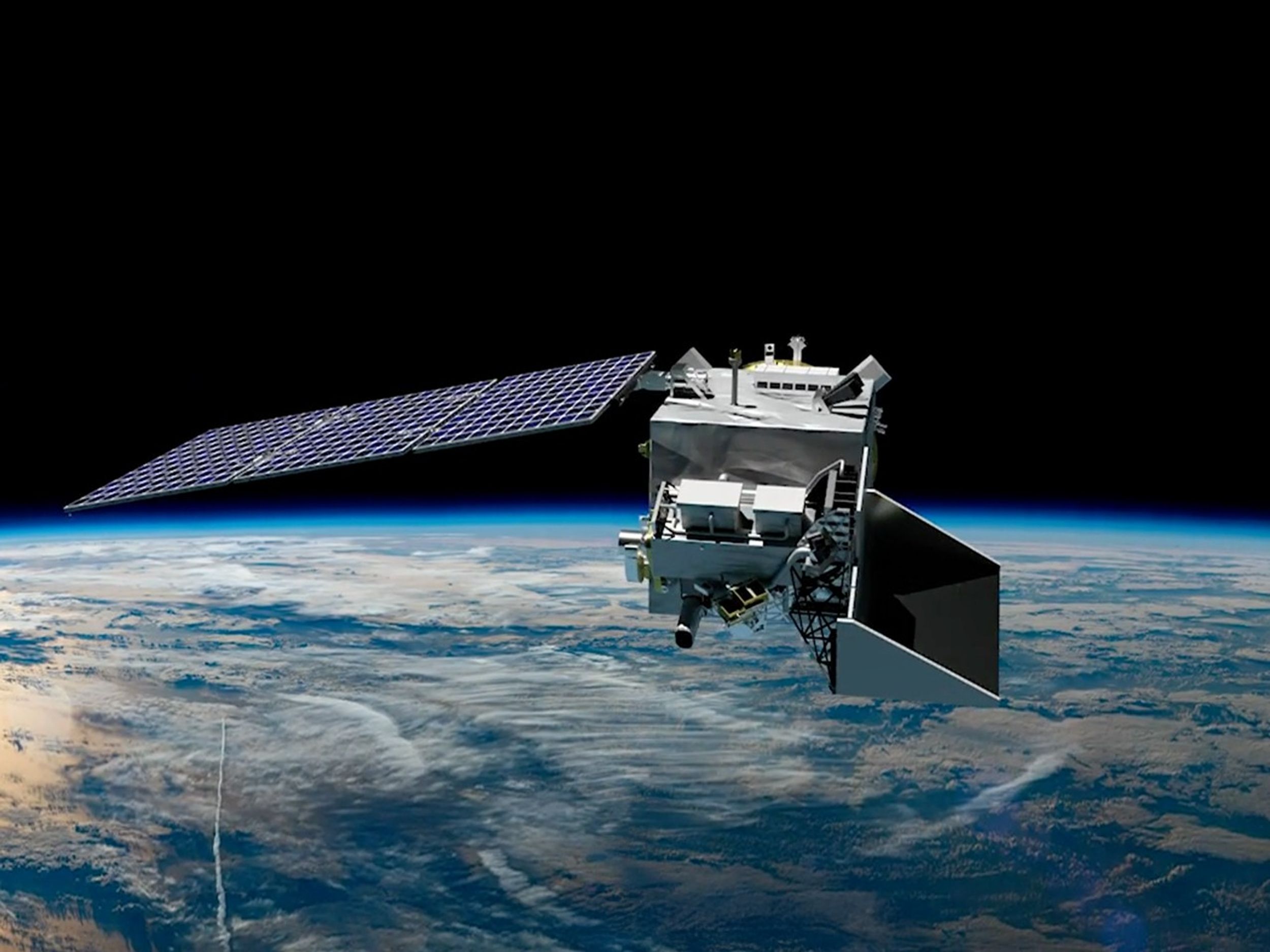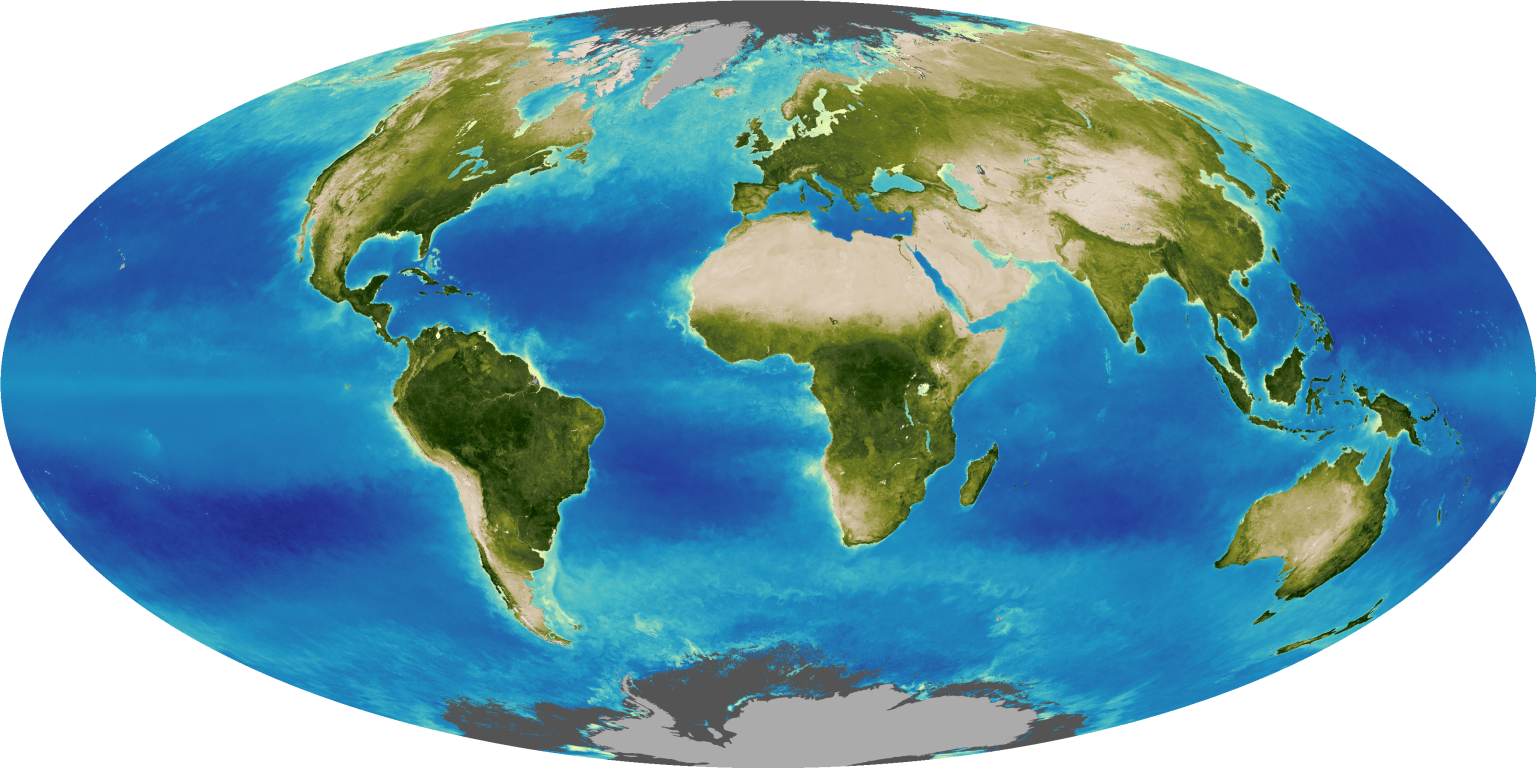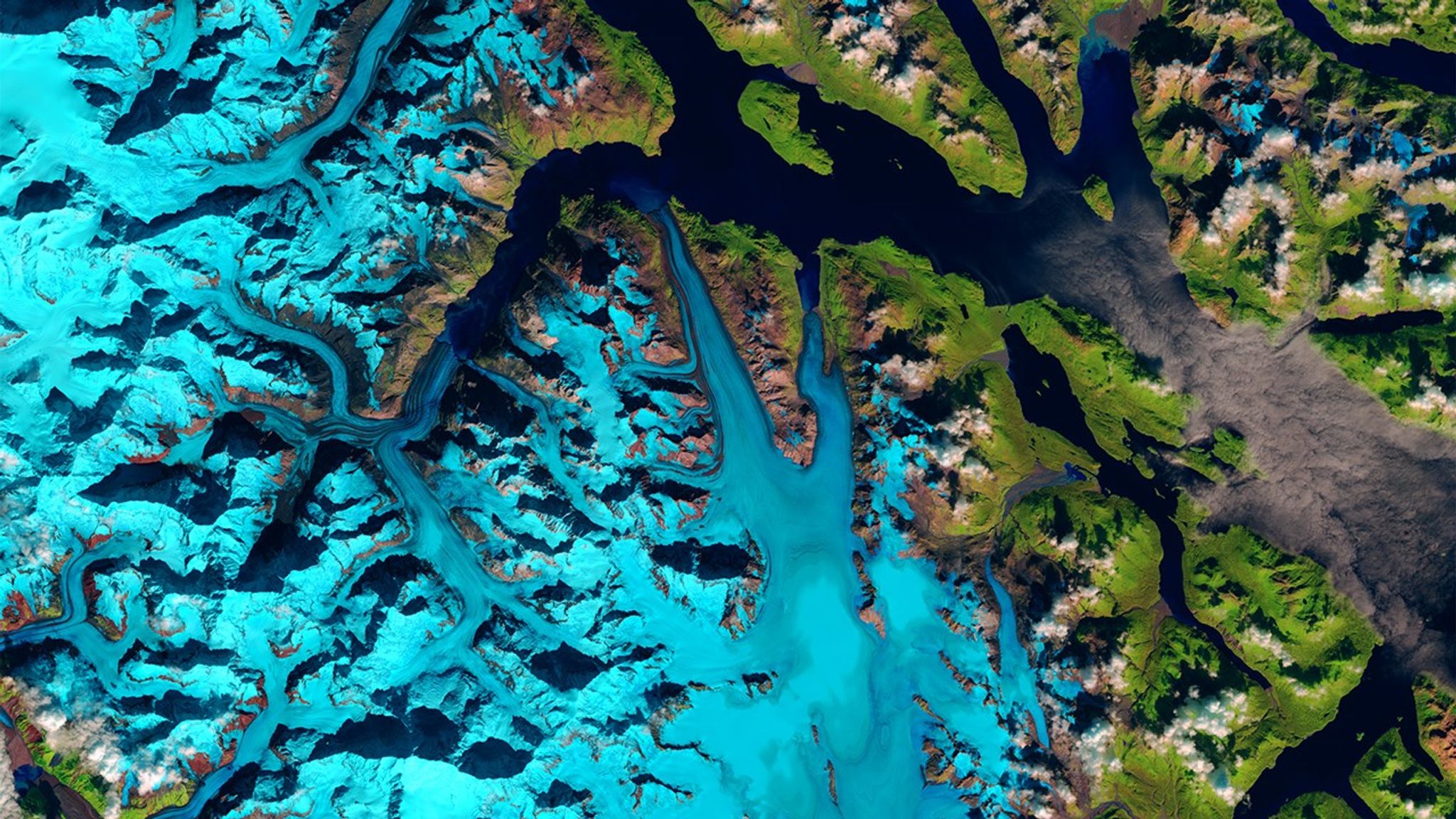

Before and After
Landslide in Glacier Bay National Park and Preserve, Alaska
September 13, 2015 - August 7, 2016
On June 28, 2016, a 4,000-foot-high mountainside in Glacier Bay National Park and Preserve collapsed, dropping rocky debris equivalent to 60 million mid-size SUVs onto nearby Lamplugh Glacier. Seismologists estimated that the material tumbled down the mountain for nearly one minute and then continued to slide along the glacier for another 6 miles. The southeast corner of Alaska, where this event took place, is geologically active and considered a hotspot for such landslides. Images taken by the Operational Land Imager onboard Landsat 8. Source: U.S. Geological Survey (USGS) Landsat Missions Gallery; U.S. Department of the Interior / USGS and NASA.

























